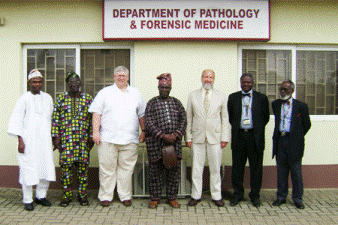Natural Resources, School of

Karl Reinhard Publications
Document Type
Article
Date of this Version
2000
Citation
Published in Archaeological Method and Theory: An Encyclopedia, ed. Linda Ellis (Garland, 2000), pp. 52–60.
Abstract
The field devoted to the identification of parasite remains in the archaeological record and the reconstruction of past human-parasite interactions. Parasitic disease has always been a major problem. Recent summaries of the prevalence of parasitic diseases in the world today show that there are 4.5 billion infections with all species of parasitic worm, 1 billion infections with giant intestinal roundworm (Ascaris lumbricoides), 750,000,000 infections with whipworms (Trichuris trichiura), 900,000,000 infections with hookworm (Ancylostoma duodenale and Necator americanus), 657,000,000 infections with filarial worms, 200,000,000 with blood flukes (schistosome species), and 489,000,000 infections with malaria. These infections cause between 1,590,000 to 3,130,000 million deaths per year (Roberts and Janovy 1996:2). One can see from these statistics that any contribution to understanding human parasitism will contribute to reducing the parasite problem. The archaeological record provides the necessary time depth to document the origins of human parasitism. Modern archaeology is sufficiently refined to identify the behavioral and ecological conditions that led to the emergence of parasitism as a threat to human well-being. Therefore, archaeology is a field of important basic research that can be used to address the rise of parasitism in addition to issues of purely archaeological significance.
Included in
Archaeological Anthropology Commons, Ecology and Evolutionary Biology Commons, Environmental Public Health Commons, Other Public Health Commons, Parasitology Commons


Comments
Copyright © 2000 Linda Ellis.